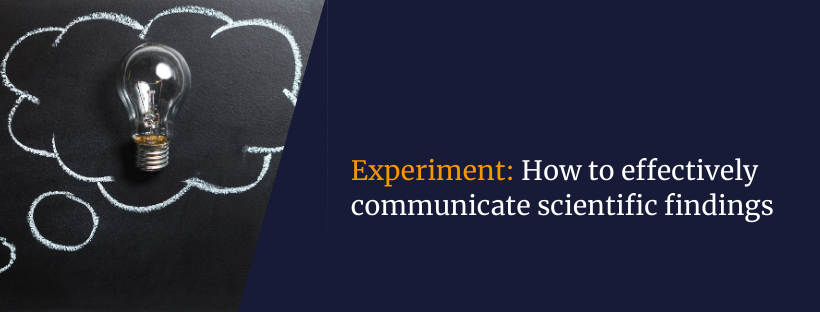Experiment: How to effectively communicate scientific findings
Evidence from the TRESCA Citizen Science Communication Workshops, an experiment on pre- and post-audio perception of video mediated scientific communication. By Chiara Lovati and Giuseppe Pellegrini, Observa Science in Society Citizens find it increasingly difficult to choose between the growing number of science communication sources and discern trustworthy and reliable information from fake news. But there are some elements that science communicators can pay attention to and ensure that their message gets across as effectively as possible.In a series of science communication workshops organised by TRESCA in December 2020 in Austria, Italy and the Netherlands, researchers were able to test the perceptions of regular citizens on scientific communication. Their methodological design made it possible to explore the effects of visual and audio elements on news trustworthiness and emotional response and identify strategies that can improve and make science communication more effective in these times of uncertainty. Figure 1: A segment of TRESCA workshop participants from Italy The workshops preparation included steps such as the definition of an engagement strategy for citizens, the training of the moderators, and the selection of the two videos to be shown to participants. In this last step, two very different videos were chosen. The first one was a very fast paced, chaotic, YouTube style video with the aim to debunk Covid-19 related conspiracy theories, while the second video was a journalistic report on ex-Covid-19 patients stories, with a newscast style. The session began with an introductory speech about the TRESCA project and the activity of the day, partakers were then invited to join breakout rooms to continue the meeting in small groups. Citizens here viewed the two videos without audio and had a first discussion round on their impressions and emotional response. Following, after a small break, everyone watched the two videos again with the original audio and subtitles in the respective languages. Participants debated the credibility of the information communicated, the roles and responsibilities of the different people appearing in the videos and the impact of their emotions on how the message was being received. The comparison between participants’ reactions to the videos with and without sound helped the TRESCA team focus on the impact of images and words on participants’ perceptions of the science communication videos. Figure 2: TRESCA workshop design Researchers were able to draw some interesting conclusions from the experiment. Firstly, it is important to develop a communication style that is suitable to different types of audiences and use emotional language with caution. Science communicators should avoid extreme or contradictory positions when presenting topics, or excessive simplifications, to prevent viewers from distrusting the communicator or communication channel, and therefore rejecting the content. Secondly, to create successful forms of engagement with the public, it is better to avoid polarisations and disputes where possible. Workshops data also suggests the public is able to judge and evaluate information, therefore, science communicators should not appear to have an attitude of superiority and arrogance, and to avoid a ‘deficit model’ approach when explaining scientific findings to citizens. Figure 3: PCMAG.com, “No, 5G is not causing Coronavirus (or anything else), still from Workshop video #1 Trust in science and scientific institutions is not as straightforward as one may think. Trust is actually the result of a process rooted in previous experiences and attitudes and it cannot be changed very easily. It is crucial to create spaces for people to freely build their own knowledge and opinions. Furthermore, context varies greatly across languages and cultures, causing at times some unintended references and issues to arise in some communications, this should also be kept in mind when transmitting scientific news. Figure 4: Photo by Matheus Bertelli, from Pexels There are no easy solutions to avoiding disinformation and the dissemination of fake news. However, a powerful tool in the fight against misinformation could be fact checking apps and platforms. Nevertheless, these do not seem to be popular amongst the public: sometimes because of an accessibility issue, perhaps cultural or social, other times because they are just ignored. Indeed, for the time being, these tools are not particularly practical, but more research is being conducted – especially in the TRESCA project – to surpass these issues. Figure 5: Photo by Pixabay, via Pexels Effective scientific communication requires a time-consuming group effort by researchers, scientists, and communicators to consolidate best practices and shared knowledge. Nonetheless, effective scientific communication can certainly be mastered. Summarising, data from the workshops highlighted how important it is to avoid extremisms when discussing scientific findings, especially highly emotional language, excessive simplifications or contradictory positions. Furthermore, these workshops demonstrated the importance of maintaining contact with the public in order to detect a very useful point of view for the development of better communication. It is also crucial to steer clear of patronizing language or an attitude of superiority, while always trying to create spaces for the members of the public to freely build their knowledge and opinions.
